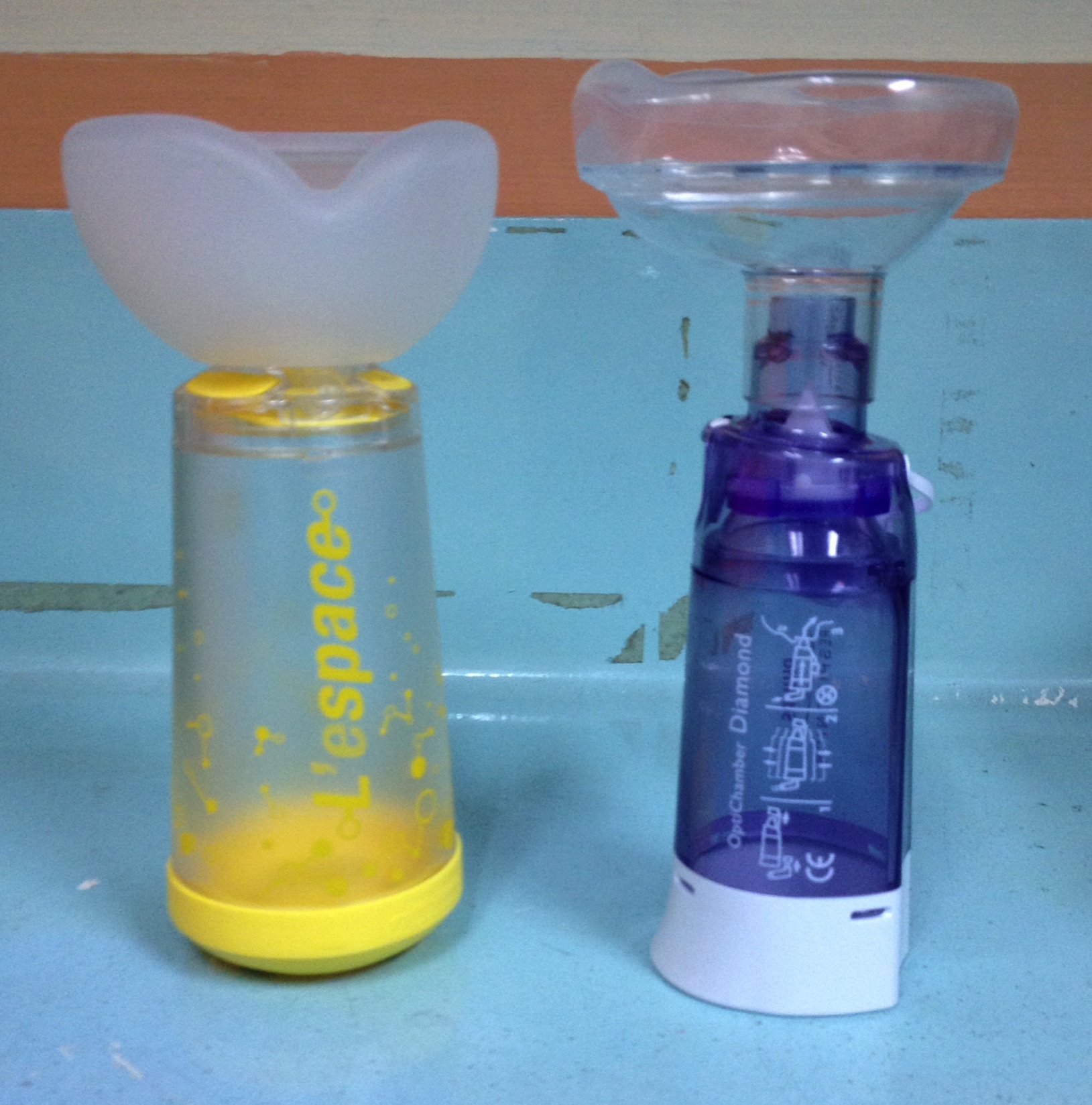What is a spacer device?
A spacer device is a plastic container designed for easy delivery of asthma medication in the form of aerosol from the metered dose inhaler. The asthma medications are the reliever and the preventer.
Metered dose inhaler
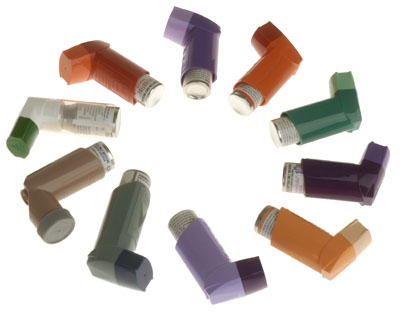
Source: http://www.ayurprakash.com/get-the-best-ayurvedic-treatment-of-bronchial-asthma- in-india/
The spacer device is used to deliver the medication because children has poor coordination to push the down the canister as well as breathing in deeply.
There are two types of spacer devices, one with a facemask attached at one end used in younger children. The facemask will cover the mouth and nose of the child during the delivery of the medication.
Spacer with face mask
How to use spacer device (faced mask)
- Take the cap off the inhaler and spacer
- Shake the inhaler
- Attach the spacer to the inhaler
- Breath out gently to empty your lungs
- Put the spacer with the face mask covering the mouth and nose and completely sealed but not too tight
- Keep your chin up
- Spray one puff into the spacer by pressing down the inhaler
- Breath in slowly and deeply and count to 10 times
- Repeat second dose if needed as prescribed by your doctor
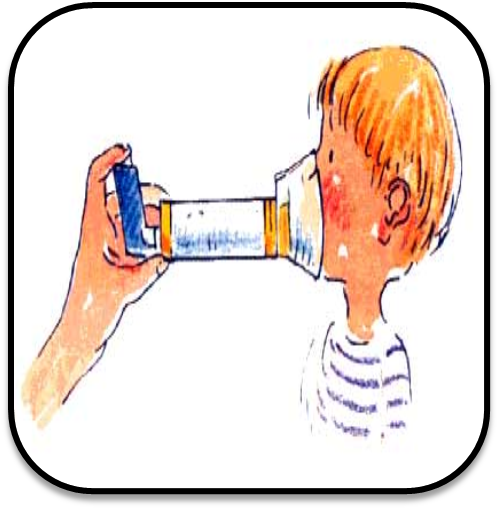
Source: http://www.rch.org.au/kidsinfo/fact_sheets/Asthma_Use_of_spacers/
Older children can use a spacer device with a mouthpiece at one end, which required to be tightly sealed in the mouth.
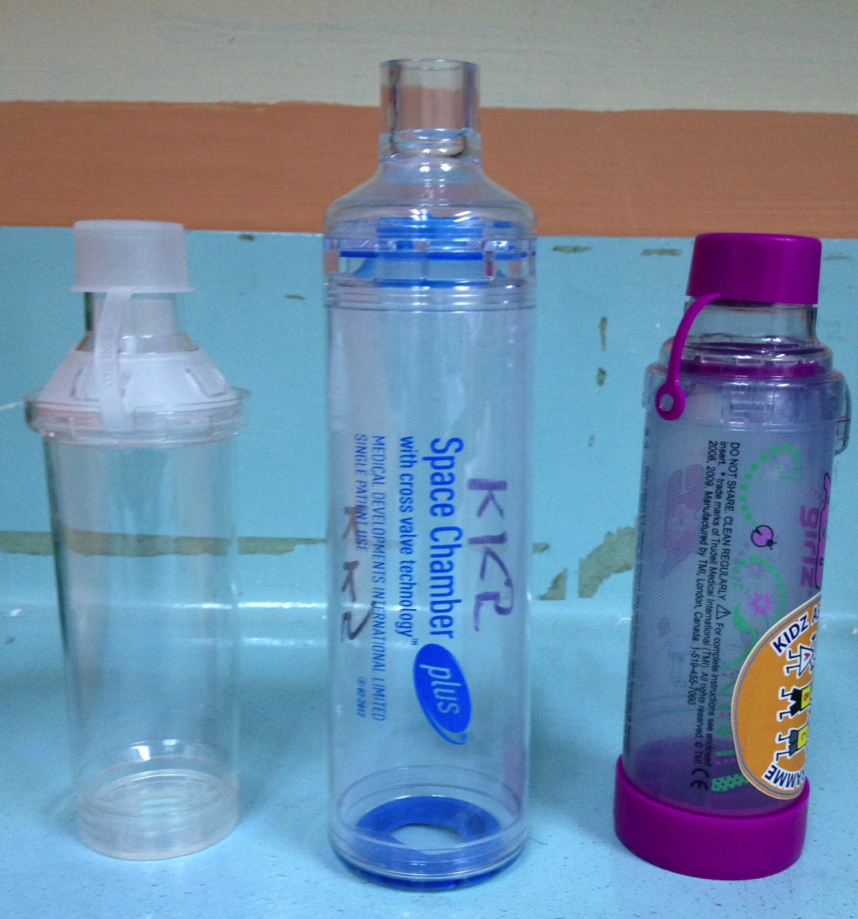
Spacer with mouthpiece
Generally there are three sizes of spacer device infant, child and adult and many brands.
The doctor needs to choose the correct size and that fits the metered dose inhaler used.
How to use the spacer with mouthpiece
- Take the cap of the inhaler and spacer
- Shake the inhaler
- Attach the spacer to the inhaler
- Breath out gently to empty your lungs
- Put the spacer between your teeth and close lips tightly around it
- Keep your chin up
- Spray one puff into the spacer by pressing down the inhaler
- Breath in slowly and deeply and count to 10 times
- Repeat second dose if required as prescribe by your doctor
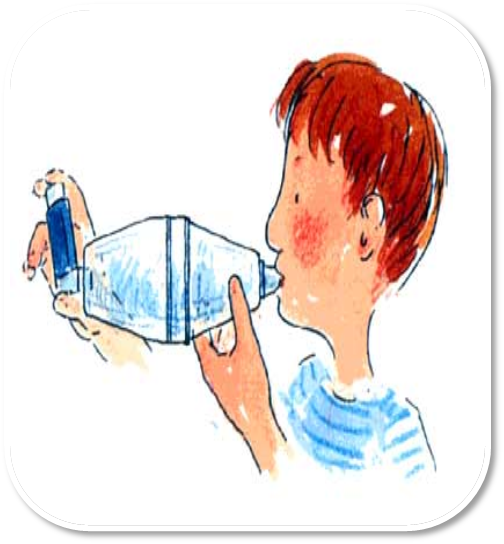
Source: http://www.rch.org.au/kidsinfo/fact_sheets/Asthma_Use_of_spacers/
The plastic surface of the spacer contains electrostatic charges causing the drugs to stick to the wall of the spacer, thus reducing the amount of medications into the lung. In order to prevent damage to the surface and reduced electrostatic charges, care of the spacer is important.
How often a spacer should be cleaned?
One study suggests that the effect of the detergent coating on electrostatic charge diminishes within 1 week.
It should be cleaned once a week with warm water with mild cleaning detergent. It should be drip dry naturally (room air). Do not microwave the spacer to dry it.
Caution not to rub the internal surface of the spacer with brush or cloth as it will damage the surface. Do not use HOT water to clean the spacer or harsh detergent such chlorine as it will also damage the spacer.
References:
- Use of and care of spacers: Australian handbook Of Australia. http://www.asthmahandbook.org.au/management/devices/spacers
- Clinical practice guidelines for management of childhood asthma revised 2004. A consensus statement prepared for Academy of Medicine of Malaysia, Thoracic Society and Malaysian Paediatric Association.
| Last Reviewed | : | 18 August 2016 |
| Writer | : | Dr. Norzila bt. Mohamed Zainudin |
| Accreditor | : | Dr. Irene Cheah Guat Sim |


